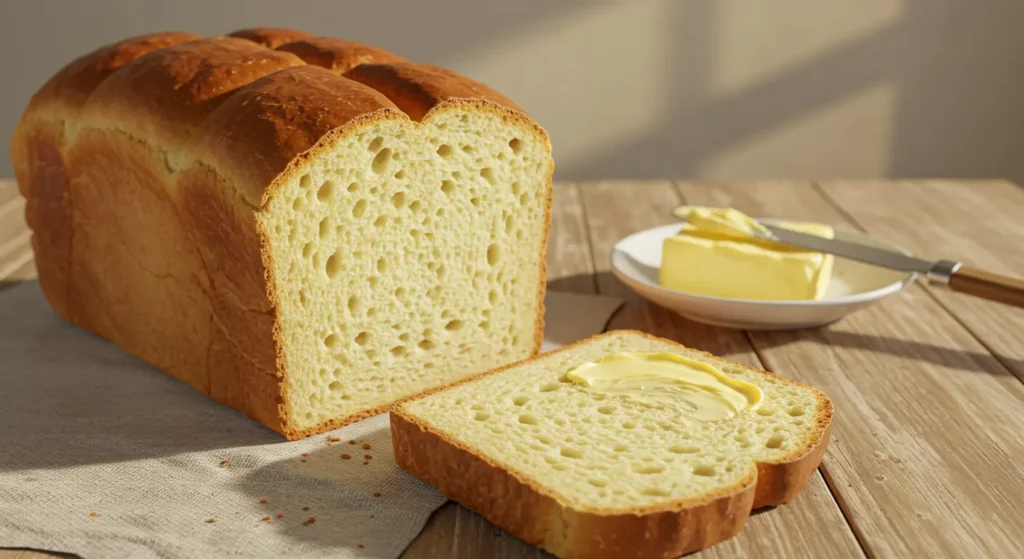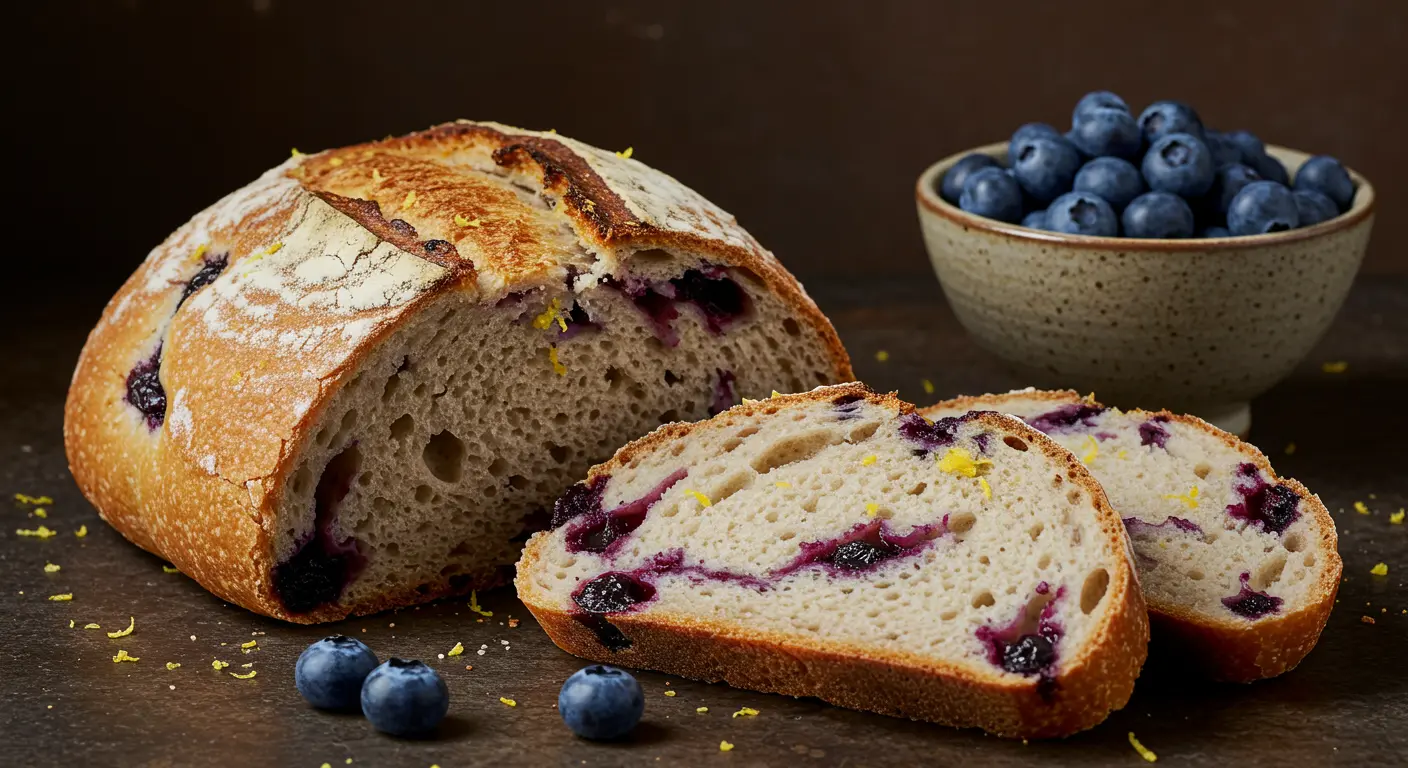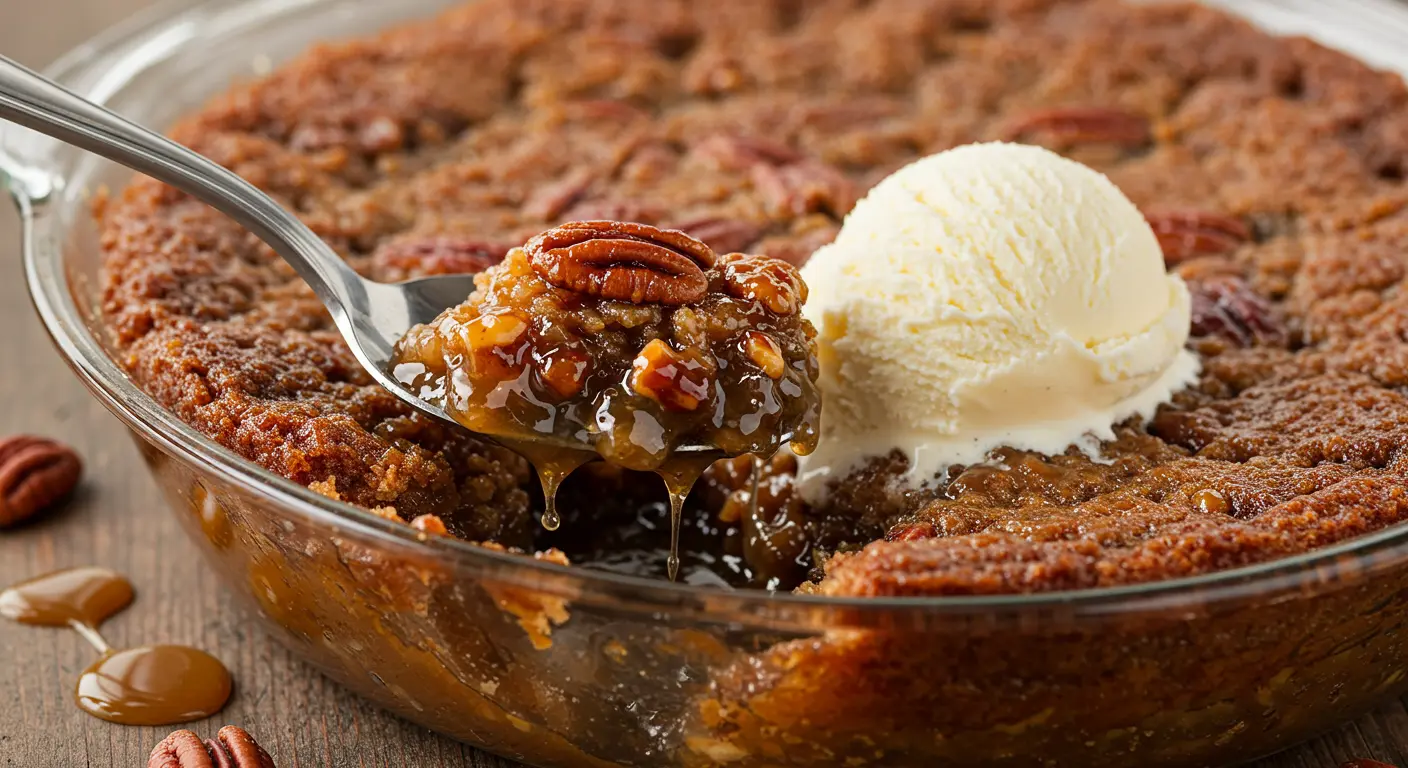Nothing beats the aroma of freshly baked bread wafting through the kitchen, especially when it’s a butter bread recipe. Soft, fluffy, and rich with the subtle taste of butter, this recipe is perfect for breakfast, sandwiches, or simply enjoyed on its own. The combination of creamy butter and warm bread creates a comforting treat that feels like home.
The history of bread with butter is rooted in simplicity—two humble ingredients that have been staples in households for centuries. This recipe elevates that classic pairing by infusing butter directly into the dough, resulting in a rich and velvety texture in every slice.
This simple butter bread recipe is beginner-friendly, requiring minimal ingredients and effort. Whether you’re a seasoned baker or trying your hand at breadmaking for the first time, this recipe guarantees delicious results. Plus, it’s versatile—you can serve it fresh out of the oven, toasted with jam, or as a side to soups and stews.
In this guide, you’ll learn step-by-step how to create this delightful bread butter recipe at home. Ready to fill your kitchen with the irresistible scent of baking bread? Let’s dive in!
Quick Recipe Card
Simple Butter Bread Recipe
- Prep Time: 20 minutes
- Rise Time: 2 hours
- Cook Time: 30 minutes
- Total Time: 2 hours 50 minutes
- Difficulty Level: Easy
- Servings: 1 large loaf (8–10 slices)
Ingredients
- 3 ½ cups (420g) all-purpose flour
- 2 tbsp sugar
- 1 ½ tsp salt
- 1 packet (2 ¼ tsp) instant yeast
- 1 cup (240ml) warm milk (110°F/43°C)
- 4 tbsp unsalted butter, softened
- 1 egg
Equipment Needed
- Large mixing bowl
- Stand mixer with dough hook (optional)
- Measuring cups and spoons
- Loaf pan (9×5 inches)
- Clean kitchen towel
Instructions
- Combine the warm milk, sugar, and yeast in a bowl. Let sit for 5 minutes until frothy.
- In a large bowl, mix flour and salt. Add the yeast mixture, egg, and softened butter. Knead until smooth.
- Cover with a kitchen towel and let rise for 1-1.5 hours or until doubled in size.
- Punch down the dough and shape it into a loaf. Place in a greased loaf pan.
- Cover again and let rise for 30 minutes. Preheat your oven to 350°F (175°C).
- Bake for 25–30 minutes or until golden brown. Let cool before slicing.
Nutritional Information (Per Slice)
- Calories: 170
- Protein: 5g
- Carbohydrates: 28g
- Fat: 4g
- Fiber: 1g
- Sugar: 3g
This butter bread recipe is perfect for any occasion. Follow these steps for a soft and delicious loaf that will wow your family!
Ingredient Deep Dive
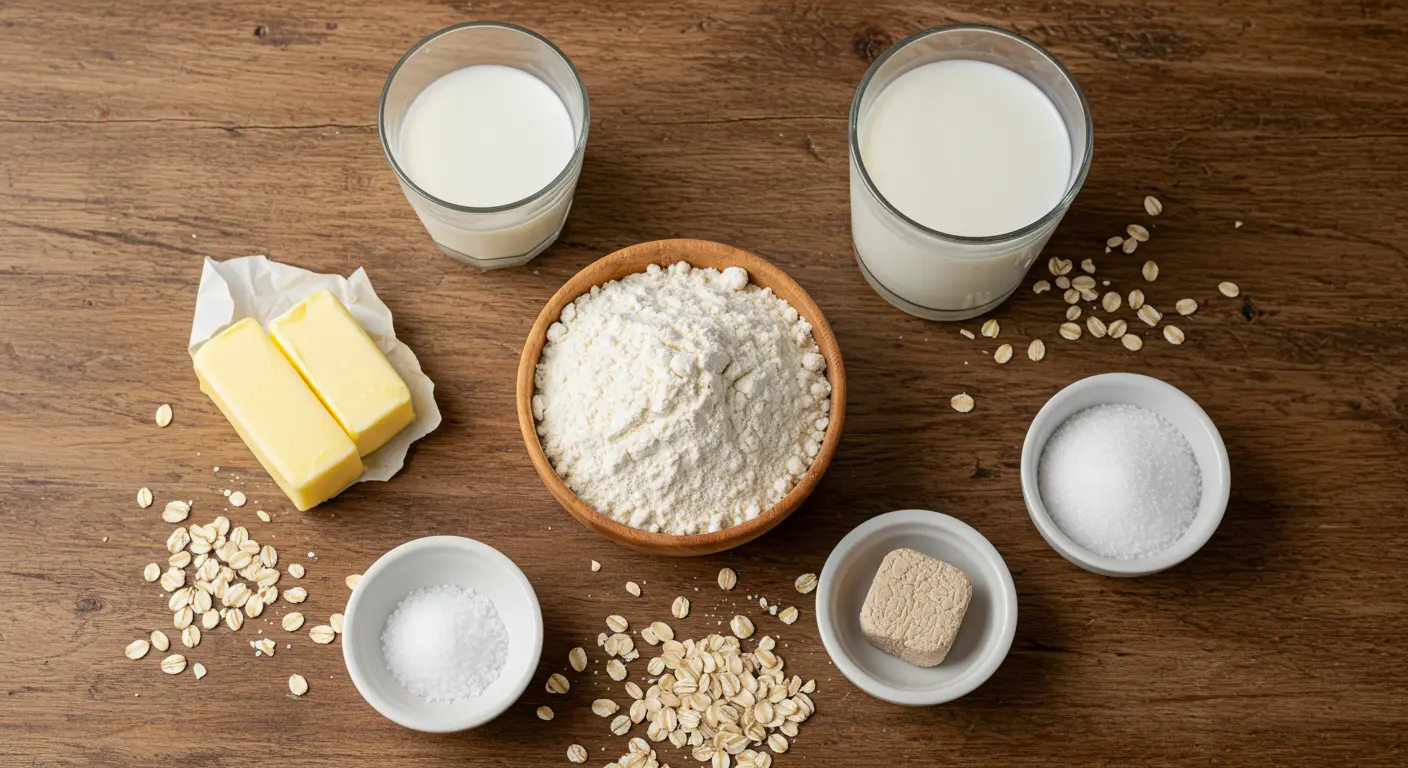
Understanding the ingredients in this butter bread recipe will help you achieve perfect, soft loaves every time. Each element plays a crucial role in creating that tender crumb and buttery flavor.
Key Ingredients
- Flour: All-purpose flour works best for this recipe, but bread flour can also be used for a slightly chewier texture.
- Butter: The star of this bread butter recipe, unsalted butter is ideal for controlling the salt level. Ensure the butter is softened at room temperature to blend seamlessly with the other ingredients.
- Yeast: Active dry yeast helps the dough rise and creates those fluffy, airy loaves. Make sure to proof the yeast for best results.
- Milk: Warm milk adds moisture and a slight sweetness to the recipes for butter bread, ensuring a tender texture. For a richer flavor, whole milk is recommended.
- Sugar: A small amount of sugar balances the flavor and aids in yeast activation.
- Egg: One egg adds richness and enhances the structure of the bread, keeping it soft.
- Salt: A pinch of salt brings out the buttery flavor without overpowering the sweetness.
Substitution Options
- Milk Alternatives: Use almond milk, oat milk, or any dairy-free option for a lactose-free version of this simple butter bread recipe.
- Butter Alternatives: If needed, replace the butter with vegan butter or margarine for a plant-based adaptation.
- Gluten-Free Flour: For a gluten-free version, use a 1:1 gluten-free baking flour blend. Note that the texture may vary slightly.
Brand Recommendations
- Use high-quality butter brands like Kerrygold or Land O’Lakes for the richest flavor.
- King Arthur Flour is excellent for both all-purpose and bread flour options.
Storage Tips
- Store butter properly before use; keep it refrigerated until a few hours before baking to soften.
- If making the dough in advance, you can refrigerate it overnight after the first rise and bake fresh loaves in the morning.
Temperature Requirements
For the perfect butter bread recipe, maintain a warm kitchen environment during the dough’s rising time. The ideal temperature for proofing dough is between 75°F to 85°F (24°C to 29°C).
Equipment Needed
To ensure a smooth baking process, gather the following tools for this butter bread recipe:
- Mixing Bowls: A set of large and medium bowls for combining and proofing the dough.
- Stand Mixer: Ideal for kneading the dough, especially if using the dough hook attachment. It saves time and effort compared to hand-kneading.
- Measuring Cups and Spoons: Accurate measurements are key to perfecting this bread butter recipe.
- Whisk: Useful for blending wet ingredients and activating the yeast.
- Dough Scraper: A handy tool for shaping and transferring the dough without sticking.
- Rolling Pin: Helps shape the dough into an even loaf, ensuring uniform baking.
- Loaf Pan: Use a standard 9×5-inch loaf pan for beautifully shaped bread.
- Kitchen Scale: Optional but ideal for weighing ingredients for precise results, especially when trying new variations of this simple butter bread recipe.
- Pastry Brush: Perfect for applying a butter wash on the loaf for that golden-brown crust.
- Cooling Rack: Allows proper air circulation, preventing sogginess and ensuring the bread cools evenly.
Step-by-Step Instructions
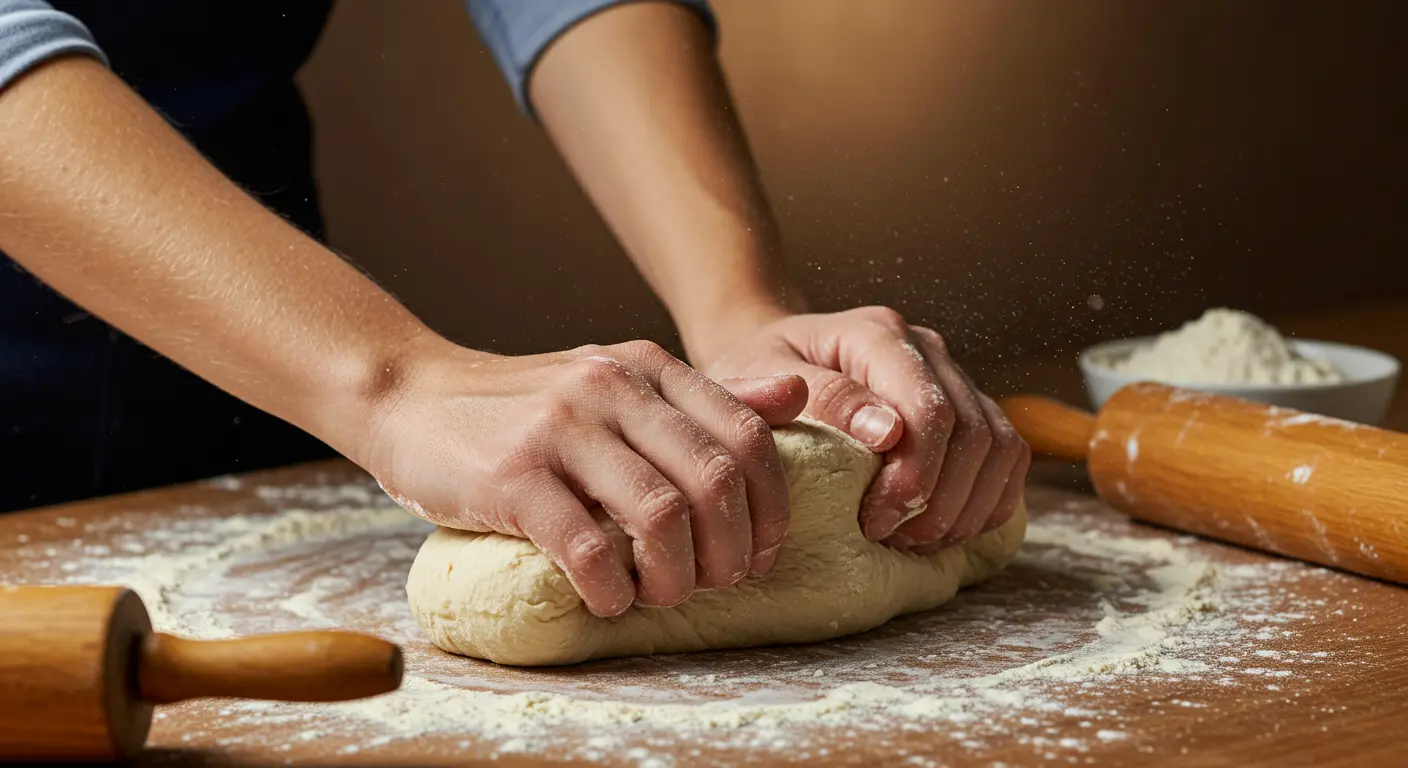
Let’s dive into creating this butter bread recipe, step by step. Follow these instructions closely for soft, delicious loaves every time.
Step 1: Gather Ingredients
Before starting, ensure all your ingredients are measured and ready:
- 3 ½ cups of all-purpose flour
- 2 ½ teaspoons of instant yeast
- 2 tablespoons of sugar
- 1 teaspoon of salt
- 1 cup of warm milk
- 2 large eggs, room temperature
- 4 tablespoons of unsalted butter, melted (plus extra for greasing and brushing)
This combination ensures the perfect balance of sweetness and fluffiness in this recipes for butter bread.
Step 2: Activate the Yeast
In a small bowl, combine warm milk, sugar, and yeast. Let it sit for 5–7 minutes until it turns frothy. This step ensures your yeast is active and ready to create airy bread.
Step 3: Mix the Dough
- In a large mixing bowl, whisk together the flour and salt.
- Add the yeast mixture, eggs, and melted butter to the dry ingredients.
- Use a stand mixer with a dough hook or your hands to knead the mixture until it forms a soft, elastic dough. This usually takes about 8–10 minutes.
Step 4: First Rise
Place the dough in a greased bowl, cover it with a damp towel, and let it rise for 1–1.5 hours in a warm spot. The dough should double in size, a critical step for achieving the fluffiness of this bread with butter recipe.
Step 5: Shape the Dough
Punch down the dough to release air bubbles. Transfer it to a floured surface and shape it into a loaf or rolls, depending on your preference. Place the shaped dough into a greased loaf pan.
Step 6: Second Rise
Cover the loaf pan with a damp towel and let it rise for an additional 30–40 minutes. This second proofing ensures the dough is light and airy before baking.
Step 7: Bake the Bread
Preheat your oven to 350°F (175°C). Brush the top of the dough with melted butter for a golden crust. Bake for 25–30 minutes, or until the loaf is golden brown and sounds hollow when tapped.
Step 8: Cool and Serve
Remove the bread from the oven and transfer it to a cooling rack. Let it cool for at least 15 minutes before slicing. Enjoy warm slices with butter, jam, or any topping of your choice.
This simple butter bread recipe is ideal for breakfast, snacks, or pairing with soups and stews.
Expert Tips and Tricks for Perfect Butter Bread
Making butter bread at home can be a breeze with these expert tips and tricks. Whether you’re a beginner or a seasoned baker, these insights will elevate your baking game and ensure every loaf turns out perfectly.
Professional Baker Insights
- Use Room-Temperature Ingredients: Always bring eggs and butter to room temperature before mixing. This helps the ingredients combine smoothly, creating a consistent texture for your butter bread.
- Measure Precisely: Baking is a science, so use a kitchen scale for accurate measurements, especially for flour, to avoid dense or overly dry bread.
- Knead Properly: Kneading develops gluten, which is crucial for the bread’s structure. Test the dough by stretching it—if it forms a thin, translucent “windowpane,” it’s ready.
Troubleshooting Common Issues
- Dense Bread: This often results from under-kneading or using expired yeast. Ensure your yeast is fresh and the dough is well-kneaded.
- Overbaked or Dry Bread: Check your oven temperature with a thermometer. Overbaking dries out the bread, so bake until golden and remove promptly.
- Sticky Dough: If the dough is too sticky, sprinkle in small amounts of flour while kneading. Be cautious not to overdo it, as too much flour can make the bread dense.
Make-Ahead Instructions
You can prepare the dough in advance! After shaping, cover the loaf tightly with plastic wrap and refrigerate overnight. Let it sit at room temperature for 30–40 minutes before baking.
Storage Guidelines
- At Room Temperature: Store the bread in an airtight container or wrapped in foil for up to 3 days.
- Freezing: Wrap the loaf or slices in plastic wrap, then foil, and freeze for up to 3 months. Thaw at room temperature before serving.
- Reheating: Warm slices in the oven at 300°F for 5–7 minutes or pop them in a toaster for a fresh-out-of-the-oven taste.
Master these tips, and your butter bread will be the talk of every table!.
Variations and Customizations for Your Butter Bread Recipe
The simplicity of a butter bread recipe makes it an excellent canvas for creativity. With some tweaks, you can transform this delightful loaf into something uniquely yours while incorporating various flavors and catering to dietary preferences.
Seasonal Adaptations
- Summer: Add fresh herbs like rosemary, thyme, or basil to give the bread a light, savory summer feel. Pair your simple butter bread recipe with a side of fresh salads for a perfect warm-weather meal.
- Fall: Infuse the dough with pumpkin puree, cinnamon, or nutmeg for an autumn-inspired bread with butter that warms the soul.
- Winter: Incorporate festive ingredients such as dried cranberries, orange zest, or chocolate chips into the dough for a holiday-ready loaf.
- Spring: Brighten your bread with lemon zest and poppy seeds to celebrate the freshness of spring.
Dietary Modifications
- Gluten-Free: Swap the all-purpose flour with gluten-free flour blends and ensure the use of a binding agent like xanthan gum. This ensures your recipes for butter bread maintain their soft and delicious texture.
- Vegan: Replace dairy butter with vegan butter alternatives and use flaxseed or chia seed gel as an egg substitute. Your butter bread recipe can be just as flavorful while being completely plant-based.
- Low-Sugar: Reduce sugar or use natural sweeteners like honey or maple syrup to keep your bread healthy and flavorful.
Flavor Variations
- Sweet Butter Bread: Swirl cinnamon sugar or jam into the dough for a dessert-style simple butter bread recipe.
- Savory Delight: Add shredded cheese, garlic, or chopped olives for a savory bread butter recipe twist.
- Nutty Perfection: Toss in some crushed walnuts, pecans, or almonds to create a nutty, flavorful loaf.
Decoration Ideas
- Classic Crust: Brush with egg wash and sprinkle sesame or poppy seeds for a traditional, golden crust.
- Festive Touch: Use cookie cutters to imprint shapes on the dough before baking for a festive butter bread recipe presentation.
- Elegant Finish: Drizzle a light glaze or dust the top with powdered sugar for a sophisticated dessert loaf.
Whether you’re making bread for a cozy family dinner or experimenting with new flavors, these ideas help you customize your butter bread recipe for any occasion.
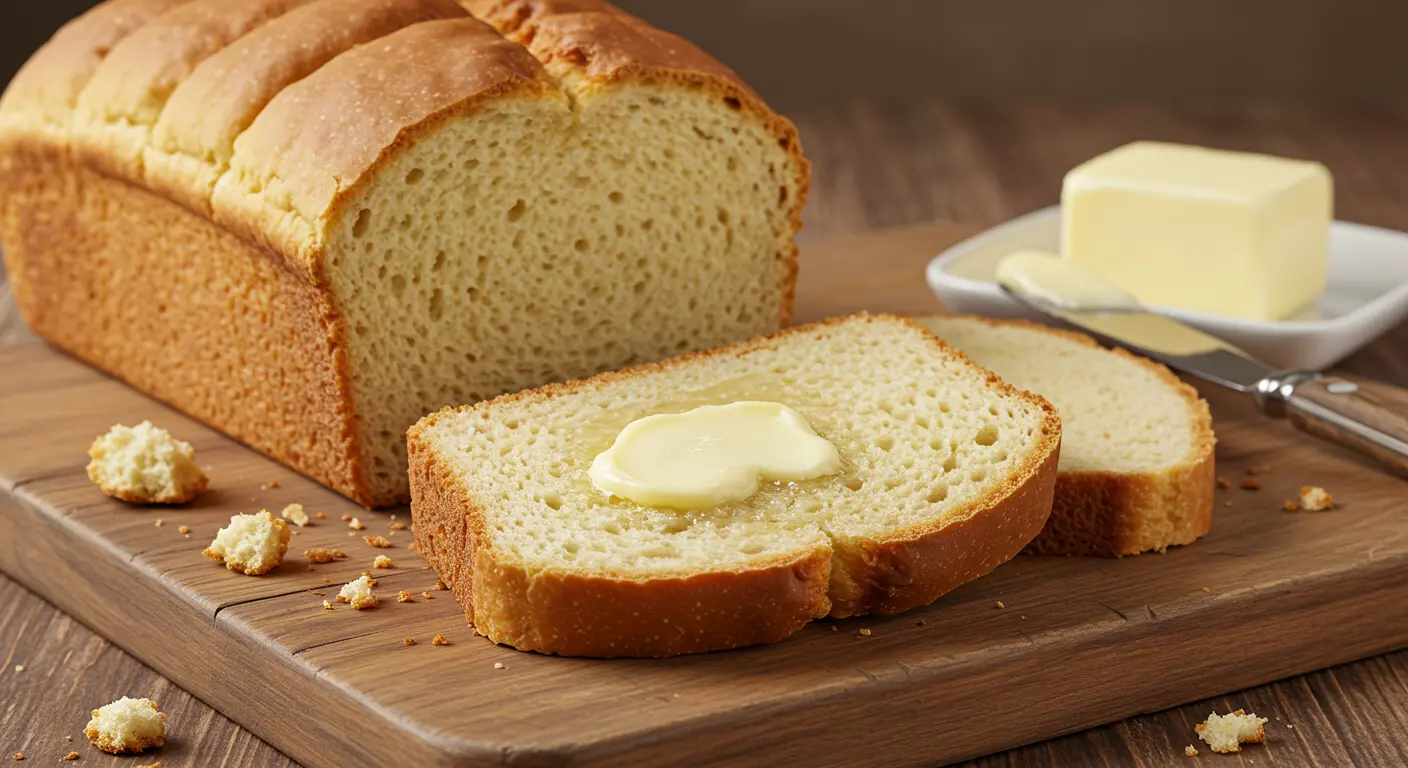
Conclusion
Crafting your own butter bread recipe is a rewarding experience that fills your kitchen with warmth and irresistible aromas. This versatile and delicious bread is perfect for any occasion, whether you’re making it as a simple daily staple or adding creative twists for special events. By exploring variations like sweet or savory flavors, seasonal adaptations, and even dietary modifications, you can make this simple butter bread recipe truly your own.
From pairing a slice of bread with butter for breakfast to using it as the base for an elegant sandwich, the possibilities are endless. With proper storage and a few professional tips, your bread will stay fresh and delightful for days.
Get creative with your bread butter recipe, experiment with flavors, and most importantly, enjoy the process. There’s nothing quite as comforting as sharing homemade bread with loved ones. Now, it’s your turn to bake, customize, and savor the joy of this timeless recipe!
FAQ
1. Can I make this butter bread recipe gluten-free?
Yes, you can adapt this butter bread recipe to be gluten-free by using a gluten-free flour blend. Ensure that the blend is specifically formulated for yeast bread recipes to achieve the right texture.
2. Can I use salted butter instead of unsalted butter?
Absolutely! If using salted butter, simply reduce the amount of added salt in the simple butter bread recipe to balance the flavors.
3. What’s the best way to store bread with butter?
To keep your bread with butter fresh, store it in an airtight container at room temperature for up to 3 days. For longer storage, freeze the bread and thaw slices as needed.
4. Can I use this recipe for butter bread to make rolls instead of loaves?
Yes! This versatile butter bread recipe can be easily shaped into rolls or smaller portions. Adjust the baking time to approximately 15–20 minutes for rolls.
5. Can I make this butter bread recipe without a stand mixer?
Yes, you can prepare this simple butter bread recipe by hand. It will require more effort for kneading, typically 8–10 minutes of consistent kneading, until the dough becomes smooth and elastic.
6. Can I add herbs or spices to this bread butter recipe?
Absolutely! You can customize your recipes for butter bread by adding herbs like rosemary, thyme, or garlic powder for a savory twist. Cinnamon and nutmeg work well for a sweet version.
7. Is it possible to make this recipe vegan?
To make a vegan version of this butter bread recipe, substitute dairy butter with plant-based butter and use a non-dairy milk alternative such as almond, soy, or oat milk.
8. How do I know when the bread is fully baked?
The best way to tell if the bread with butter is baked is to tap the bottom of the loaf after removing it from the pan. It should sound hollow. Alternatively, check for an internal temperature of 190–200°F (88–93°C) using a food thermometer.
9. Can I freeze this butter bread for later?
Yes, you can freeze this butter bread recipe. Wrap the loaf or slices in plastic wrap and aluminum foil to prevent freezer burn. It can stay fresh in the freezer for up to 2 months. Thaw at room temperature before serving.
10. What are some common mistakes to avoid?
- Using water that’s too hot, which can kill the yeast.
- Skipping the kneading process, which ensures your butter bread recipe develops the proper structure.
- Not letting the dough rise fully, which can lead to dense bread.

